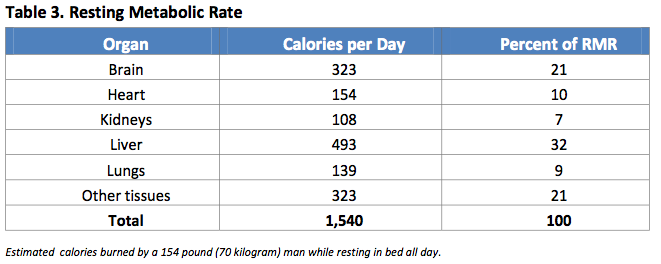One Size Does Not Fit All
Frequently, we hear people complain, “I know what I should do to lose weight. I just don’t/can’t do it.” Lack of control over food intake and exercise has humbled many a dieter. Successful weight reduction isn’t as easy because one diet does not fit everyone. Professional advice, individually tailored to a person’s lifestyle and food preferences, is likely to be more effective than a packaged program or a homemade diet. If diets worked, then everyone who has ever gone on a diet would be thin. That’s not what happens.
Most dieters are overweight. A safe and reasonable weight-loss target is one half to one pound (0.25 to 0.5 kg) a week for a person who weighs less than 150 pounds (68 kg); one to two pounds a week is safe and reasonable for heavier bodies. The way to lose weight for the long haul is to learn how to eat healthfully and appropriately.
Counting Calories
A calorie is a unit of energy.
Become familiar with the caloric content of the foods you commonly eat, and then consume your calories wisely. It helps to have a calorie budget to understand how much is okay to eat to maintain or lose weight. Just as you know how much money you can spend when you shop, you might find it helpful to know how many calories you can take in when you eat. You must eat 3,500 fewer calories than you burn to lose one pound.
To assess your caloric needs, you can use the method described below, use a “calorie calculator” on the Web, or you might meet with a registered dietitian.
Total caloric need for athletes is the sum of (1) resting metabolic rate, (2) general activity, and (3) purposeful exercise (sport training).
You can make a estimate of your caloric needs by using the following steps:
- Estimate your resting metabolic rate (RMR). The number of calories you need to breathe, pump blood, and generally be alive (see Table 3) can be estimated by multiplying your healthy weight by 10 calories per pound (or 22 calories per kilogram).We will use Jim to demonstrate this. Jim weighs about 150 pounds. He needs approximately 1,500 calories (150 x 10) simply to do nothing all day except exist.
- Estimate calories for daily activity apart from purposeful exercise. If you are sedentary, add 20 to 40 percent of your RMR; if you are moderately active throughout the day, add about 50 percent of your RMR; if very active (in addition to your purposeful exercise), add 60 to 80 percent of your RMR.Jim is moderately active throughout the day with his family and job. He burns about 750 calories (50 percent x 1,500) for daily activities of living.
- Estimate more calories for purposeful exercise. The best estimates of purposeful exercise activity are provided by power meters. For more discussion in estimating caloric expenditure from cycling, see also page 17. For example, when Jim went out for a training ride on his bicycle after work, he rode for two hours and burned about 800 calories.
- Add the calories together for the total estimate of daily caloric needs.Therefore Jim’s totals are as follows: 1,500 cal RMR + 750 cal daily activity + 800 cal purposeful exercise = 3,050 total cal/day
To lose weight, subtract 500 calories from your total daily calorie needs. This will create a deficit of 3,500 calories per week (500 calories x 7 days). A 3,500 calorie deficit will equal one pound of fat loss. This is a safe and reasonable way to lose weight. Avoid trying to lose too much weight too quickly. Slow and steady weight loss stays off; quick weight loss may rapidly reappear.
If Jim cuts back too much too fast, he might get too hungry and blow his diet. Jim’s daily target, if trying to lose one pound of fat per week, is: 3,050 daily calories – 500 = 2,550 calories for the day.
10 Percent for Fun
This is my personal rule of thumb. If you have fun/comfort foods that you enjoy like ice cream, cookies, cake, or pizza, allow yourself to have 10 percent of your total daily calories as these fun foods.
Sometimes it’s okay to blow it all together and have fun meals and say “what the heck!”
We believe that it is important not to restrict or make these foods taboo but rather an integral part of your daily food choices. We find that it reduces the binging that can occur if you deprive yourself of foods you really enjoy eating.
Remember just 10 percent; don’t get carried away!
Final Words
There’s no magical way to lose weight. It comes down to diet and exercise: Take in fewer calories than you burn, and you lose weight.
If you’re worried about your metabolism or you can’t seem to lose excess weight despite diet and exercise, talk to your physician.
Don’t look to dietary supplements for help in burning calories or weight loss. Products that claim to speed up your metabolism are often more hype than help, and some may cause undesirable or even dangerous side effects. Dietary supplement manufacturers aren’t required by the Food and Drug Administration to prove that their products are safe or effective, so view these products with caution and skepticism.
According to the American College of Sports Medicine (ACSM) healthful body weight is one that can be realistically maintained, allows for positive advances in exercise performance, minimizes the risk of injury or illness, and reduces the risk factors for chronic disease
If you are interested in a more detailed analysis of what a healthful body weight might be for you, you may want to meet with a registered dietitian.
Calorie counting can be a helpful bridge to get you in touch with your body’s ability to tell you how much is okay to eat so that you feel satisfied. You can and should quickly replace calorie counting with listening to your body’s signals for hunger and satiety. Calorie counting should not become an obsession!


